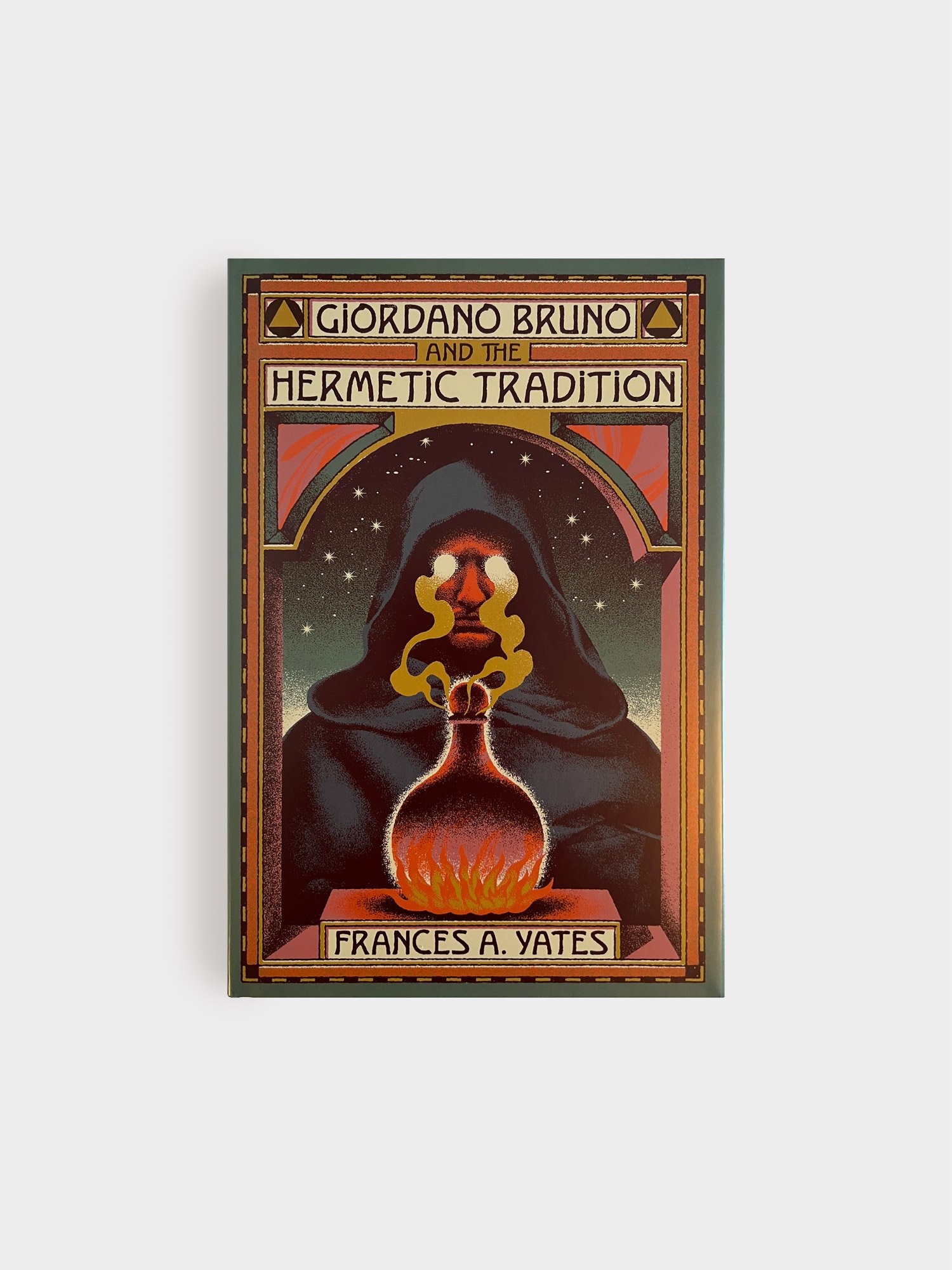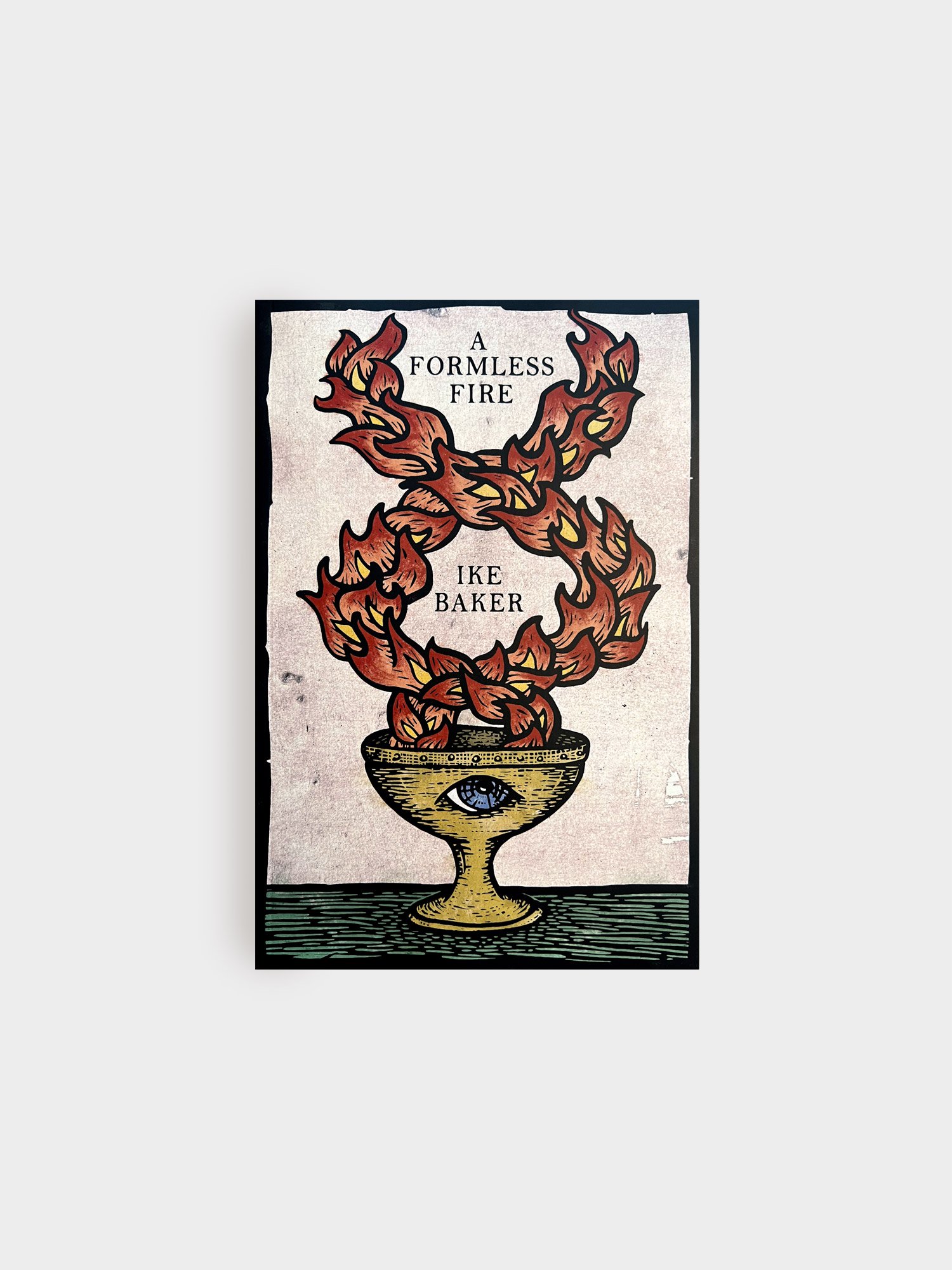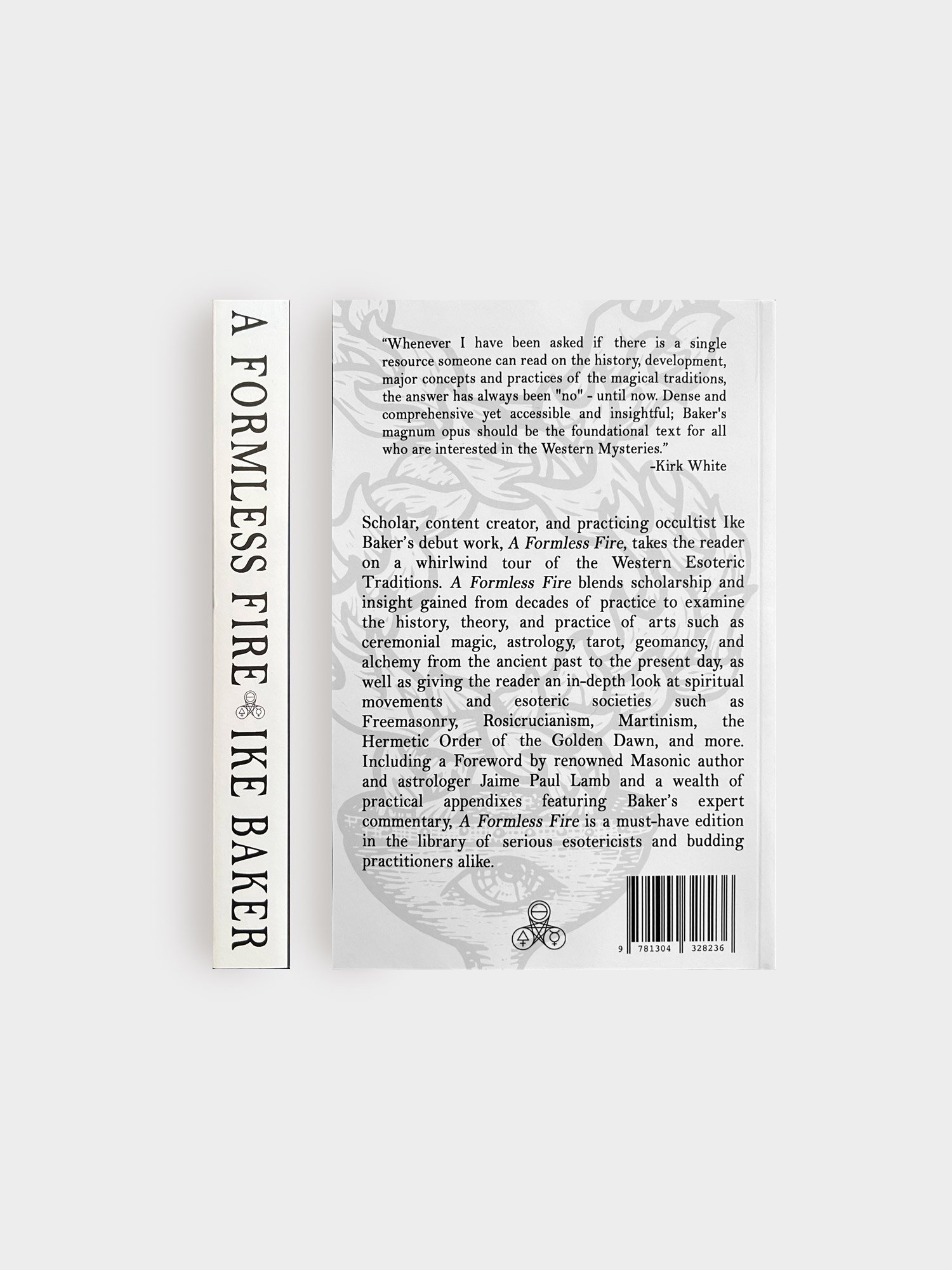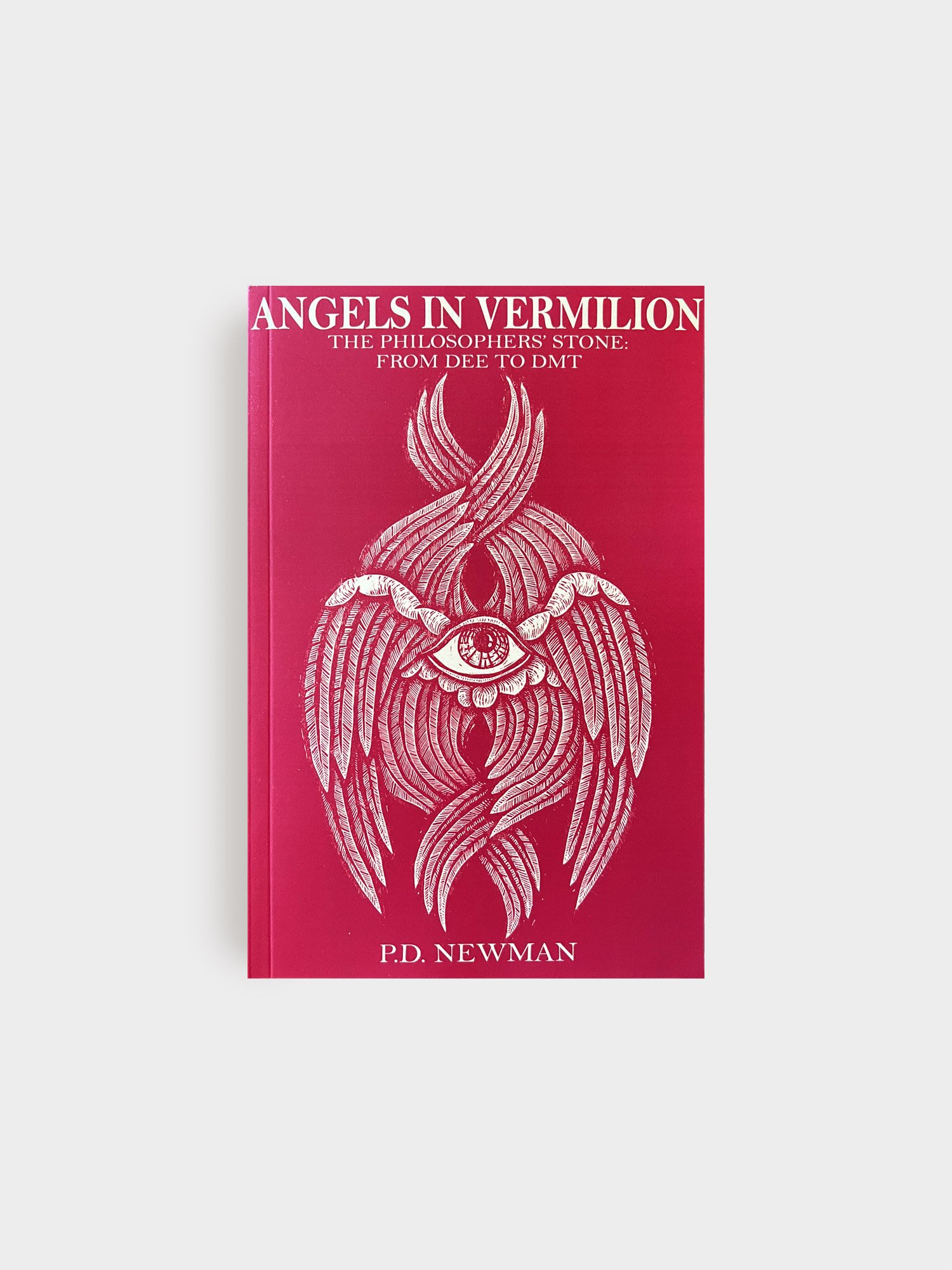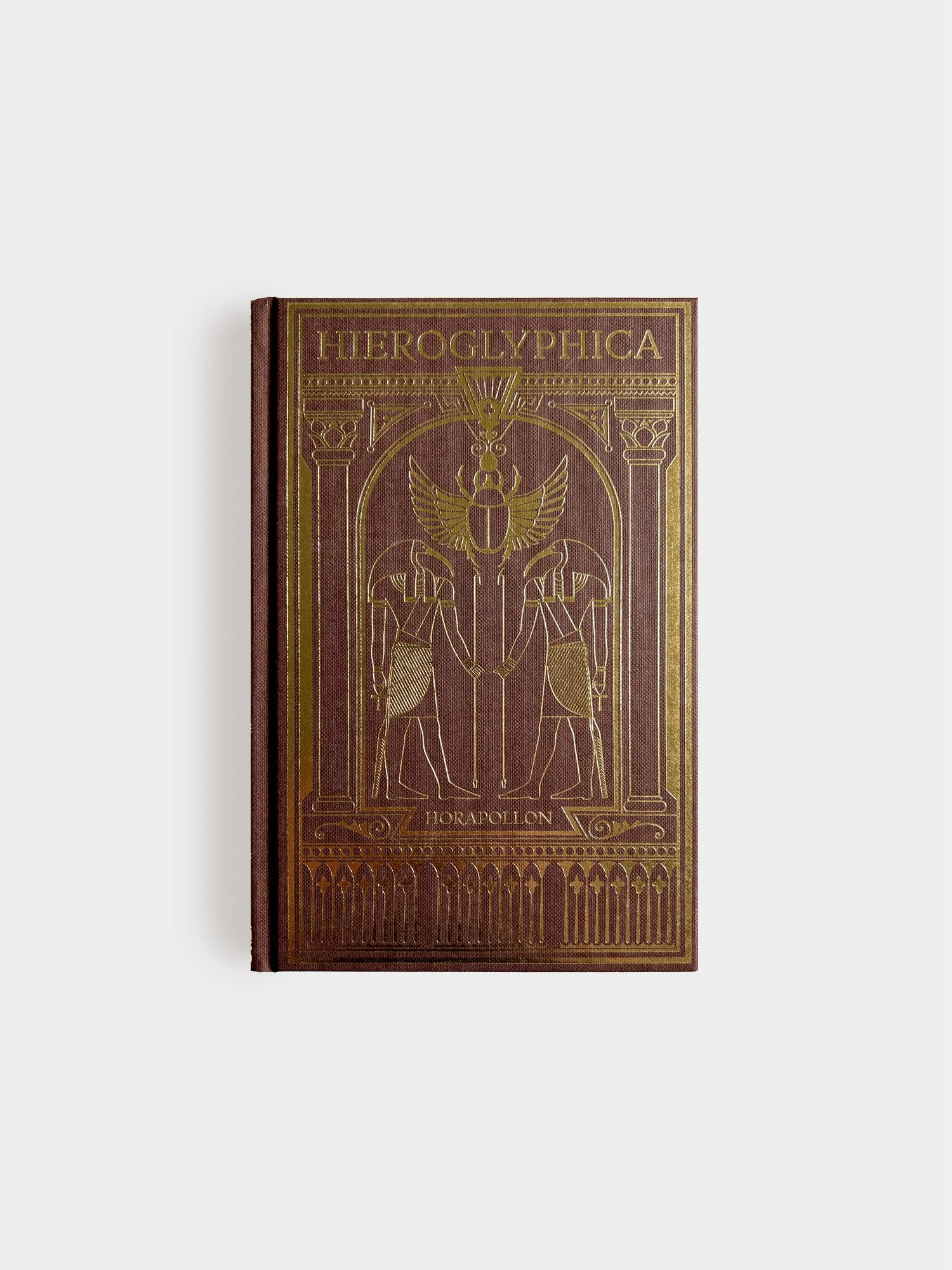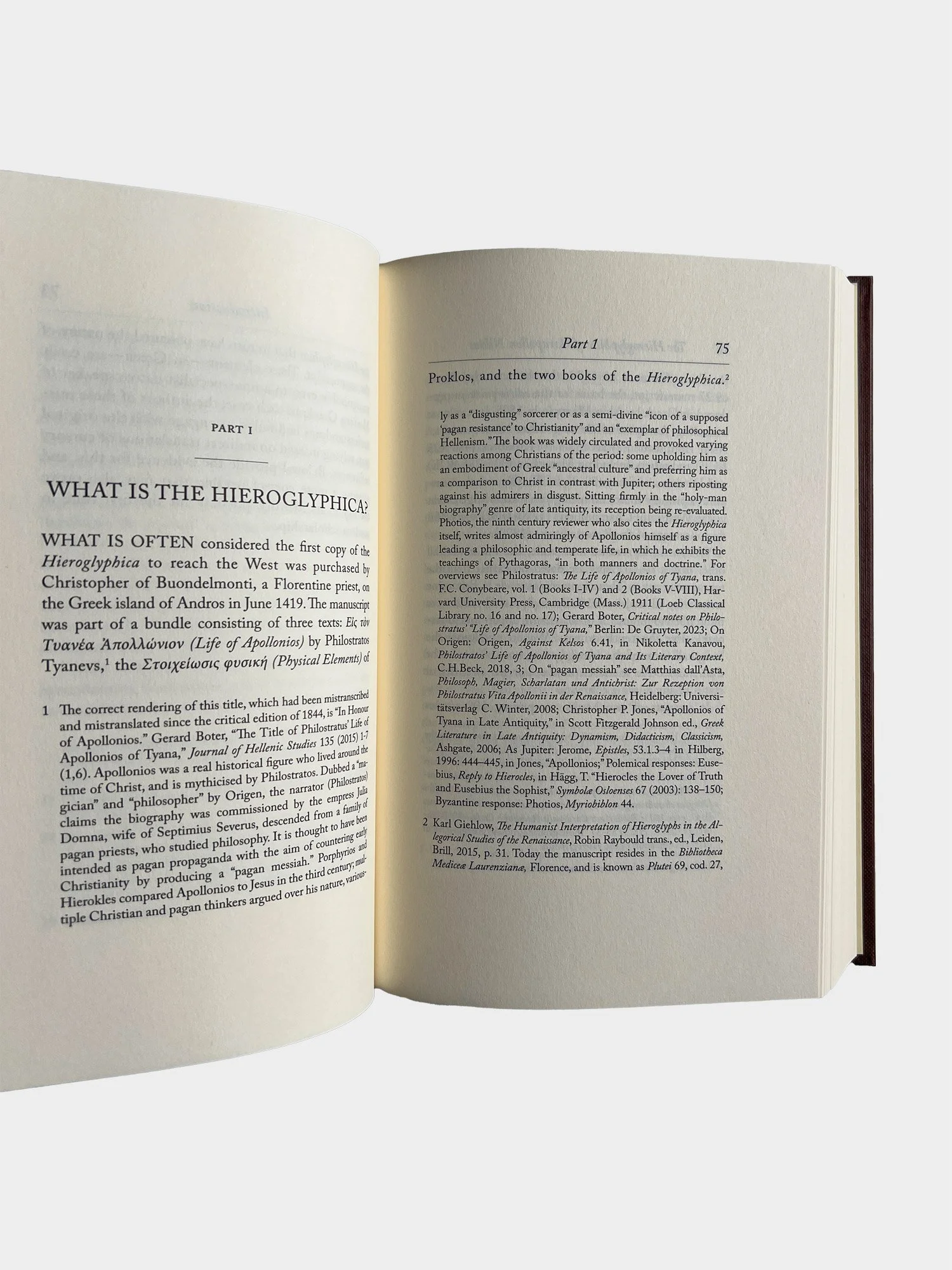Giordano Bruno and the Hermetic Tradition
By Frances A. Yates
Cover design by Max Löffler and interior book design by Farzana Razak
Giordano Bruno and The Hermetic Tradition by Frances Yates is one of the definitive books on Renaissance occult studies, Hermeticism, and Renaissance philosophy. This book not only serves as a great introduction to the intellectual milieu of the Renaissance, but it also bridges the gap between the Late-Renaissance magical thinking and the dawn of Enlightenment rationality.
This book profiles the fascinating outsider Giordano Bruno, who lectured on cosmology, philosophy, and memory, among other topics. These ideas led to his eventual arrest by the Roman Catholic Inquisition, where he was held captive and interrogated for 7 years. Bruno refused to recant his ideas on theology and the universe and was subsequently burned alive in 1600. He remains a martyr to this day for syncretism, mysticism, free speech, and science alike.
Frances Yates puts forth the notion that Giordano Bruno was operating within a Hermetic Tradition. A thesis some find controversial to this day.
She extensively covers the importation of Neoplatonism and Hermeticism into Italy at the beginning of the Renaissance. By going through the works of intellectuals of the time, Yates is able to paint a picture of the various mystical traditions (Kabbalah, Neoplatonism, Astrology, Magick) active within a conservative Catholic culture. Figures like Cornelius Agrippa, Marsilio Ficino, Pico della Mirandola, Robert Fludd, and Giordano Bruno are all profiled by Yates in this edition. Her work is exciting, innovative, and remains interesting to academics and laymen alike.
Giordano Bruno and the Hermetic Tradition
By Frances A. Yates
Cover design by Max Löffler and interior book design by Farzana Razak
Giordano Bruno and The Hermetic Tradition by Frances Yates is one of the definitive books on Renaissance occult studies, Hermeticism, and Renaissance philosophy. This book not only serves as a great introduction to the intellectual milieu of the Renaissance, but it also bridges the gap between the Late-Renaissance magical thinking and the dawn of Enlightenment rationality.
This book profiles the fascinating outsider Giordano Bruno, who lectured on cosmology, philosophy, and memory, among other topics. These ideas led to his eventual arrest by the Roman Catholic Inquisition, where he was held captive and interrogated for 7 years. Bruno refused to recant his ideas on theology and the universe and was subsequently burned alive in 1600. He remains a martyr to this day for syncretism, mysticism, free speech, and science alike.
Frances Yates puts forth the notion that Giordano Bruno was operating within a Hermetic Tradition. A thesis some find controversial to this day.
She extensively covers the importation of Neoplatonism and Hermeticism into Italy at the beginning of the Renaissance. By going through the works of intellectuals of the time, Yates is able to paint a picture of the various mystical traditions (Kabbalah, Neoplatonism, Astrology, Magick) active within a conservative Catholic culture. Figures like Cornelius Agrippa, Marsilio Ficino, Pico della Mirandola, Robert Fludd, and Giordano Bruno are all profiled by Yates in this edition. Her work is exciting, innovative, and remains interesting to academics and laymen alike.


